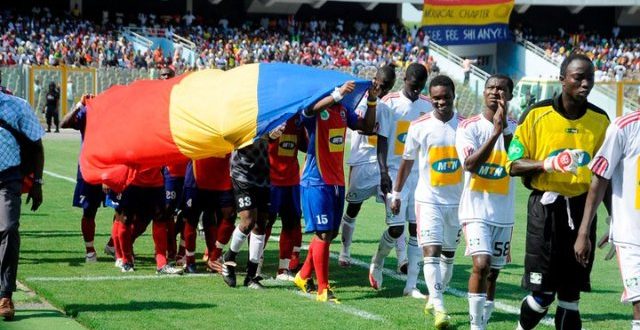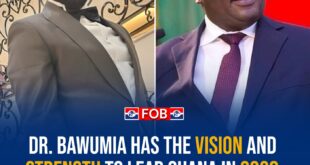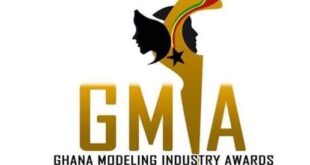
When Mr Briton, headmaster of the first Primary School established in then Gold Coast (now Ghana), set out his students to have a kickabout in 1903, little did he know he was sowing a seed for the greatest sport the land will ever witness.
The students of Philip Quaicoe Boys Basic School in Cape Coast knew a thing or two about sports, they had been introduced to cricket and tennis earlier, but it didn’t create much excitement or perhaps, they were just not carved for it.
However, when their Jamaican-born British headmaster discovered the overwhelming excitement that came with the introduction of football, unlike the other sports, he knew it was just about the perfect game for his pupils. They were thrilled and fascinated. It was love at first sight and a show of superior brawn and athleticism for the young indigenes.
Seeing the buzz amongst the students, the headmaster was impressed and decided to form a team that would be ready to entertain local folks and the governor, Sir Frederick Mitchell Hodgson. The boys would regularly train and practice for the next three months until they were ready to exhibit their skills. During this period, kits consisting of white shorts, red and yellow stripes jerseys, caps, socks and football boots were ordered from the United Kingdom for the team while sailors gifted the young men, footballs and few other items from their voyages.

Sir Frederick Mitchell Hodgson
The team which had now adopted the name Excelsior, divided themselves into two, to hold what will become the first organized match in the land. Folks including some colonial dignitaries, trooped from around the town and its environs to witness such historic moment. The crowd was packed and though the local folks had never seen such sport, they kept chanting and cheering — these were their sons, brothers and friends.
The Governor, Frederick Hodgson, who himself was a sports enthusiast was present to grace the occasion — thus football was officially inaugurated on that day. Observing the euphoria and energy the game elicited, the Governor who was mightily impressed, later requested for the team to play against a group of sailors whose ship had docked at the Cape Coast Port and some European residents.

Excelsior
On Saturday, 26th December 1903, Excelsior played against the select side and lost 2-1 but by popular request, a return match was scheduled with Excelsior winning 3-1 this time. Within a short time, neighbouring towns like Saltpond, Elmina and others formed their own teams to compete among each other.
Accra was not left out.
In 1910, a group of young men from James Town formed their team and named it Invincibles, but just a year after, neighbouring town Ussher Town also formed their team, led by Christopher Brandford Nettey (Asafoatse Nettey) — a powerful war leader during the colonial era.
The team was formed on 11/11/1911 and would go on to become one of the most prestigious clubs on the continent and forming one half of possibly, the fiercest rivalry on the continent. Excelsior and Invincibles eventually folded up and were not to be, but Hearts were forever going to be titans.
The Phobians first adopted the colours green and white upon their formation but changed to rainbow colours: Red, Yellow & Blue in 1917, upon heeding to the advice of one of their founding fathers, Mr Bruce-Tagoe. They secured their first rainbow-coloured jerseys same year from Manchester in the UK.
Other clubs such as Mysterious Dwarfs, Judges, Evertons, Bolton Wanderers, Eleven Wise etc, all sprung up within this period, but there was one – a gigantic force – whose formation was inspired by Hearts of Oak. A team that will grow to share laurels with the Accra-based club and compete with them for everything there is to fight for. Two dreaded giants whose stories are intertwined, as destiny would have it.
History has it that, early in 1924, a young driver for one of the colonial dignitaries (Col. Ross), accompanied him to a football match. Coincidentally, the match involved Accra Hearts of Oak and Accra Standfast. The driver, Kwasi Kuma, who was thrilled with what he had witnessed returned to Kumasi and with the help of his electrician friend, Lawrence Yaw Asamoah formed his football club called Kumasi Rainbow; taking inspiration from how the team in rainbow colours had played so well that day (Hearts won 2-1).
Two years later, the name of the team was changed to Ashanti United after the leaders managed to lure students from schools within the town to join the team. In 1931, there was another change in name when they christened the club Titanics, given how gargantuan they had become in the region, but that did not bring them enough luck and was the name was changed again to a more powerful one: Mighty Atoms in 1934. Mighty Atoms was not particularly different from Titanics as both names brought little to no success.
In 1935, James Frimpong (aka Teacher Frimpong) who was a teacher at the Kumasi Government School and also involved in running the club sought permission and blessings from the traditional ruler of the land, Asantehene Nana Osei Agyeman Prempeh II, to name the team after what is considered a symbol of the strong defense mechanisms and prowess of the Ashantis during wars – Kotoko (The Porcupine). A great gathering of chiefs was convened on 31st August 1935 to rename the club and for it to be adopted a royal motif for the biggest kingdom in Gold Coast. His royal highness, the Asantene and Atipinhene (Nana Boakye Yamoa) were elected the first patrons of the clubs.
Back in Accra, Hearts of Oak had risen from grass to grace, winning their first recognized match in 1922. A nouveau competition was started, dubbed, Accra league championship, which was established in 1920; at stake was the Sir Gordon Guggisberg Shield, won by Hearts of Oak six times out of twelve. Up until the 1940s, football was played on regional basis but the concept of a national league was first hatched in 1943 but didn’t see the light of day until 13 years later.
In the 1950s, Government had to get involved and warned clubs to get a unified regulatory body to oversee the affairs of all regions, lest there was not going to be any tour of the Black Stars in the UK. That worked some magic, though ephemeral, clubs consented, leading to the formation of United Gold Coast Amateur Association in the ‘50s.
There was some sort of power struggle between the Ashanti Regional Association and the National Association as the former did not want to relinquish their autonomy nor were they impressed with the association’s new President, and so the first mooted league in 1956 was boycotted by teams from the northern sector of the country. But a consensus was reached and in 1958 with a new chairman at the helm of affairs, a way was paved for the first national league — and here’s where the fiercest rivalry was birthed.
Then Ghana Football Amateur Association selected eight of the best teams from four municipalities to compete in the maiden national league. They were: Hearts of Oak and Great Olympics (Accra), Hasaacas and Eleve Wise (Takoradi), Mysterious Dwarfs and Venomous Vipers (Cape Coast) and Asante Kotoko and Cornerstone (Kumasi).
The eternal rivalry between Kotoko and Hearts got its roots from that year. Hearts, who were the oldest of all the clubs assembled had won few laurels in the Accra League organized by the Governor, Sir Gordon Guggisberg. They were in good shape, meanwhile royal club, Asante Kotoko hadn’t played so many matches nor won so many laurels. On August 24th 1958, the two teams squared off in Kumasi and although being the home of Asante Kotoko, nobody anticipated what was going to transpire.
The match started with Hearts taking a resounding 3-0 lead before halftime. Kumasi supporters were shocked, no team had come close to humiliating them and the royalty. It was unheard of for Kotoko which had become a symbol of the Asante Kingdom bravado, to be lynched in their own background. The players could feel the tension in the crowd. Ofei Dodoo, Charles Kumi Gyamfi and Nii Dowuona knew their goals had plunged Kotoko into an unprecedented situation.
Just after recess, Kotoko came back like a truly a wounded animal. They scored three goals in the space of ten minutes and levelled things up for the Porcupines, thanks to goals from Kwame Adarkwa, Wilberforce Mfum and Fred Akuffo. Normalcy had resumed, beating a side from Kumasi was almost acceptable but a visiting club beating Kotoko in Kumasi wasn’t countenanced. Kotoko fans’ celebrations was quickly cut short when Ofei Dodoo scored again to shoot Hearts up to a 4-3 lead.
The game was soon abandoned as a clash of heads involved Hearts goalkeeper Addoquaye Laryea and Kotoko defender Gago Moro, brought fans onto the pitch and the match was eventually called off due to crowd violence. The League Management Committee blamed fans for disrupting the flow of the match and it was rescheduled to about two months later.
Both teams agreed to a replay, with a rivalry and brewing enmity between fans and players of the two teams. It was clear as day to see these two teams could never be friends right from the onset. On 2nd November 1958, there was a rematch at the Jackson Park.
Kotoko defender Opoku Mensah was dismissed for rough play, though the fans showed their displeasure, this time the match proceeded as planned. Another Kotoko player, Kweku Tawia suffered an injury and was carried off the pitch. It was a disappointing day for depleted Kotoko side as Hearts battered them 5-2 (Akwasi Amofa & Mfum scored for Kotoko while CK Gyamfi x2, Akwasi Adamu x2 and Offei Dodoo scored for Hearts).

CK Gyamfi
Only a handful of fans gathered around the Hearts players and carried them shoulder high. It was historic. Schadenfreude had been served. Hearts were indomitable and they proved their superiority in the league. Kotoko fans were disappointed but the return leg was in a fortnight. Hearts of Oak, who were now sitting comfortably atop of two clubs from Kumasi, Corners and Kotoko, had won the league title in advance and were preparing for a coronation. Their last game of the season was against Asante Kotoko in Accra, but they imagined Kotoko couldn’t trouble them in anyway, but they were wrong. Kotoko were underdogs, it would take a miracle for them to come close to getting anything from the match.
16th November 1958 arrived, Kotoko traveled to Accra with only pride to fight for. The game started with Hearts fans shouting and cheering on their players, but in the 15th minute, one of the greatest players of the land, Baba Yara silenced the Phobians but Hearts were soon awarded a penalty and equalized through Adu Darko. Kotoko also got a penalty and Fred Akuffo restored the lead. This wasn’t going to plan for Hearts as they did not envisage this in the script.

Baba Yara
Just before halftime, Agyiri-Fynn levelled for Hearts for parity. Just like the cancelled match, Kotoko returned from recess the hungrier of the two teams, as Baba Yara found the net to catapult the visitors to a surprising 4-2 win in Accra; gatecrashing Hearts of Oak’s party. After the match, some disappointed and displeased Hearts fans pelted missiles at the Kotoko players.
A free for all fight ensued between players and fans but it took police protection for Kotoko players to enter the dressing room for their safety. The President of Hearts of Oak, Mr H.P Nyemitei later condemned the actions of his supporters.
This was the beginning of an unending rivalry and the first set of Super Clash between the two most successful clubs in Ghanaian football history who share forty-three league titles, nineteen FA Cups and four continental trophies between them. A rivalry that is bridled with controversies and mouth-watering performances, one that has never failed to live up to the hype both on and off the field but importantly, has stood the test of time.
—
Some of the facts stated in this piece were culled from Ken Bediako’s book – The Complete History of the Ghana Football League, 1958-2012.
Source: Nana Owusu Ansah Doe
 Home Of Ghana News Ghana News, Entertainment And More
Home Of Ghana News Ghana News, Entertainment And More




